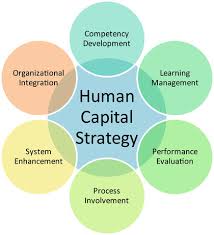Investment in human capital refers to the time and money invested in improving a person’s skills, knowledge and health. This can be done by individuals themselves or by organizations such as governments and businesses. Here’s a breakdown of why this is important:
Advantages:
- Increase in productivity: A skilled and healthy workforce can produce more and better quality goods and services.
- Economic development: Human capital is an important driver of economic growth, which raises the standard of living.
- Innovation: A well-educated population is more likely to innovate and develop new ideas.
- Social Mobility: Investing in education and training can help improve the lives of people from disadvantaged backgrounds.
- Healthy population: Investing in healthcare can lead to a healthier and more productive workforce.
Examples of investment in human capital:
- Education: From primary education to vocational training and university degrees.
- Health Care: Ensuring access to preventive care and treatment.
- On the job training: Companies investing in improving their employees.
- Early Childhood Development: Programs that support a child’s healthy development in the early years.
Who benefits:
- Persons: See increased earning potential, job security, and overall well-being.
- Business: Benefit from a more skilled and productive workforce.
- Society: Experiences economic growth, social mobility, and a healthy population.
Challenges:
- Costs: Investing in human capital requires resources and funds.
- Inequality: Unequal access to education and health care can exacerbate social inequality.
- Short Term vs Long Term: The benefits of investing in human capital may take time to materialize.
Overall, investment in human capital is essential for both individual and societal well-being. It is a long-term investment that can lead to a more prosperous and equitable future.
Related
